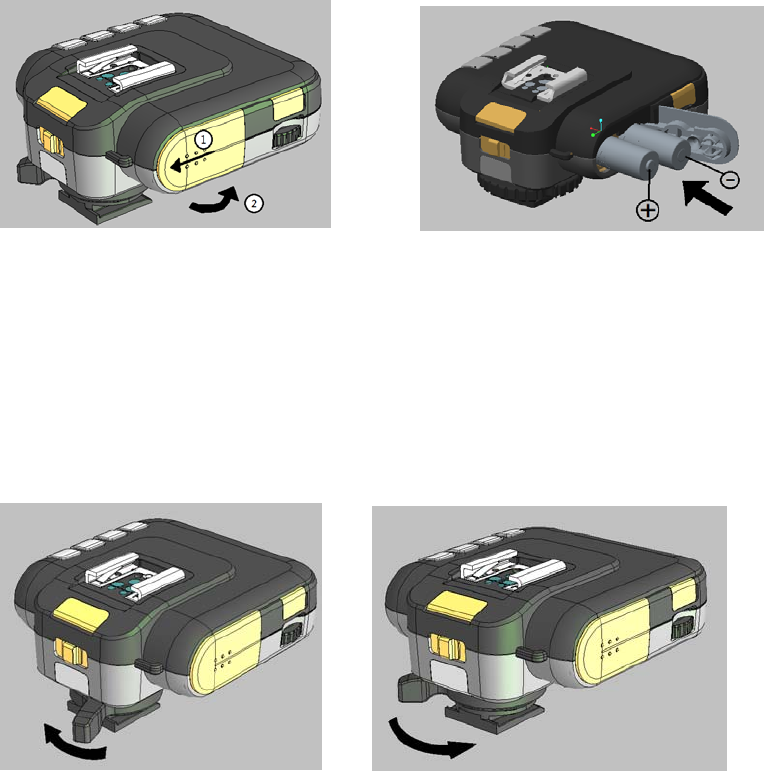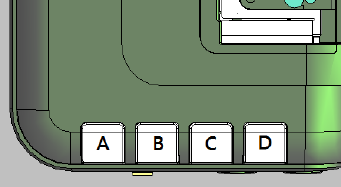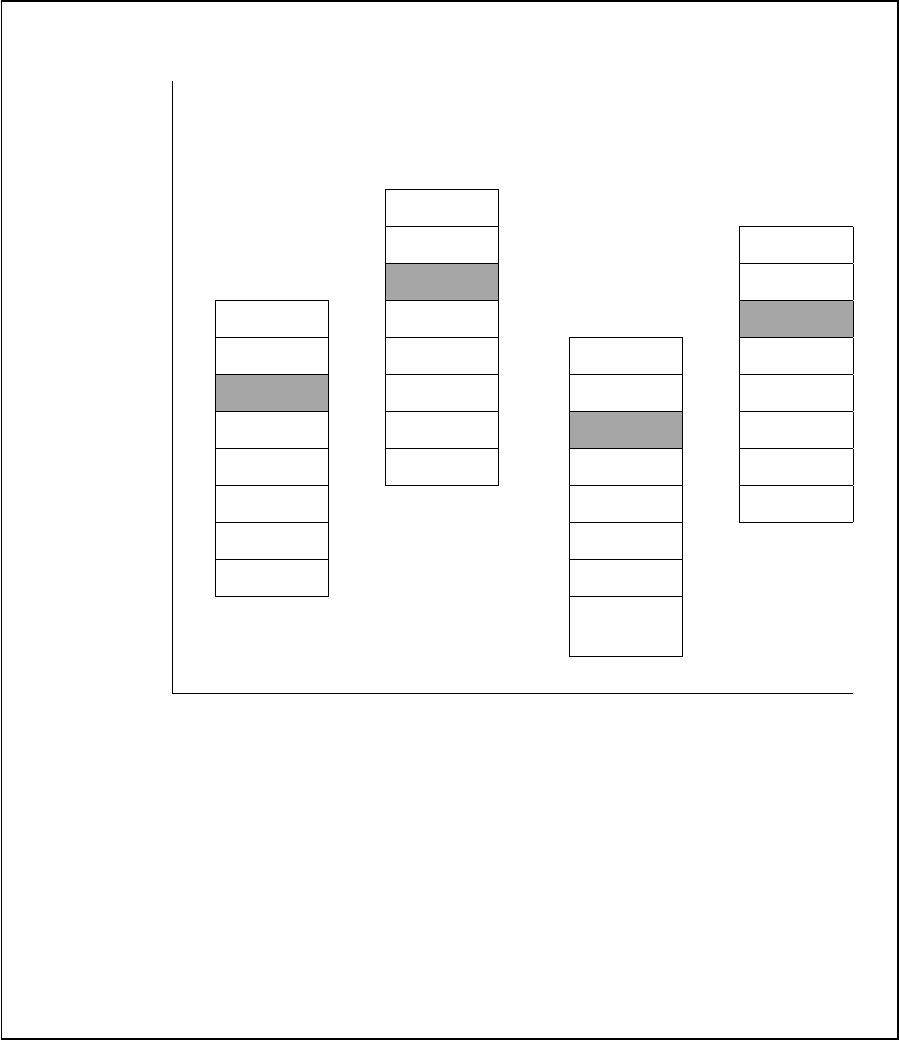Harvest One WFTV6 Wireless Flash Transceiver User Manual
Harvest One Limited Wireless Flash Transceiver Users Manual
Users Manual
127/11/201315:50
Table of Contents
1. Getting to know Cactus V6
2. Caution and Warnings
3. Major Specifications
4. Package Content
5. Nomenclature
6. LCD Panel
7. Compatibility
8. Multi System Shoe
9. Setting up V6 for the first time
10. Flash Profiles: Choosing, Learning and Copying
11. Flash Triggering
12. Remote Manual Power Control
13. Camera Shutter Release
14. Advanced Operation
15. Personalizing the V6
16. Frequency Self Tune
17. LED Signal Guide
18. USB Connection
19. Working with Cactus Gears
20. Optional Accessories
21. Troubleshooting
22. Notices
23. Warranty
1. Getting to know Cactus V6
Thank you for purchasing Cactus Wireless Flash Transceiver V6. The Cactus V6 is a
multi-functional wireless flash transceiver that allows you to command your flash of different
brands off camera with remote power control. You can position your lights at any angle, direction
and distance – the possibilities are endless!
1.1 Special Features
‐ Wireless Manual Power Control to a list of current and previous Canon and Nikon
flashes;
‐ Flash Profile Learning for Analogue-TTL flashes;
‐ Full manipulation of power levels to 1/10, 1/3, 1/2 EV stops;
‐ LoPower Mode fires flash for extremely short duration of time
‐ Absolute Power Mode benchmarks power output of different flash models to same light
227/11/201315:50
intensity;
‐ TTL pass-through with Canon, Nikon, Olympus, Panasonic, Pentax and Fujifilm via one
single unit.
‐ Built-in Optical Trigger enabling pre-flash triggering;
‐ Group Control up to 4 groups;
‐ Relay Mode triggers camera shutter and flash in sync;
‐ Delay Timer configurable from 1ms to 10 seconds;
‐ Mini-USB port for optional power supply and firmware update;
1.2 Cactus V6 – Core Concept
Like human, every flash has its own fingerprint which we call a Flash Profile. By pre-installing
the Flash Profile in the V6 system, it is capable of controlling power of various flash models
wirelessly. We have included more than 20 Flash Profiles of the most popular Canon and
Nikon models. With this unique feature, photographer could remotely control flash power of
various flash models, even of different brands!
(We will include more flash profiles in later firmware updates.)
For flash models that have not been included in the profile list,V6 could still work with it by
learning its Flash Profile. Check section 7.1.2 for the eligibility of flash models that work with
V6.
Be it built-in or obtained from the learning program, the Flash Profile stored in V6 could virtually
commands the flash to produce ANY power level within the maximum output, even exceeds
what the flash menu allows you to do:
1. Finer increment scales: V6 could adjust the power level of flash to 1/10 EV
step, a much finer increment level than the flash menu itself allows (see
Section 12.3 for setting up EV stop).
2. Extremely short firing time: In LoPower mode, V6 can fire flashes for a
very short duration of time at extremely low power level (roughly equal to
1/256), beyond the standard flash power range. (see Section 12.4 for
enabling LoPower output).
3. Benchmark light intensity output in different flashes: V6 benchmarks
the light intensity output of different flash models in your set up and
command them to fire at the same intensity of light (see Section 12.2 for
adjusting absolute power).
Ready to go? Let’s get on board and see what V6 can do!

327/11/201315:50
2. Caution and Warnings
Before using your V6, read the following safety precautions to ensure correct and safe use:
‐ Turn OFF all your equipment (e.g. Cactus units, flash units and cameras, etc.) before
changing batteries or making connection. Observe the correct polarity when changing
batteries. There is a danger of explosion if battery is installed incorrectly;
‐ Switch off the transceiver and remove batteries during storage;
‐ Do not permanently store the product in a high temperature environment (i.e. under strong
direct sunlight, near cooking stoves/oven).
‐ Cactus V6 should never be submerged in liquid or exposed to heavy rain unless it is
properly protected.
‐ Do not operate the device in the presence of flammable gases or fumes.
‐ Do not dissemble.
‐ Do not crush and do not expose the V6 to any shock or force such as hammering, dropping
or stepping on it.
3. Major Specifications
‐ Working radio Frequency: 2.445796783-2.480988190GHz
‐ Number of channels: 16
‐ Number of groups: 4
‐ Support sync speed up to 1/1,000s (subject to camera’s sync speed limitation)
‐ Maximum effective distance: 200 meters
‐ Operating temperature: -20 to +50℃℃
‐ Camera voltage handling: up to 6V
‐ Flash voltage handling: up to 300V
‐ Dimensions: 72mm (L) x 72mm (W) x 42 mm (H)
‐ Weight: 68g
‐ Power input: 2x AA batteries; mini USB 2.0, DC input 5V
‐ Estimated Battery life:
Battery Life TX RX
LCD Off
LCD On
*Battery consumption based on battery capacity of 2000mAh.
12

427/11/201315:50
4. Package Contents:
‐ Cactus V6 Transceiver (x1)
‐ Cactus Flash Stand FS-2 (x1)
‐ Album (x1)
‐ Instruction Manual (x1)
(FIG. 1)
5. Nomenclature:
(FIG. 2)
‐ Multi-system Shoe (MSS) (Female)
‐ LCD Display
‐ Lanyard Loop
‐ Test Button / Shutter Release Button
‐ Photo-sensor
‐ Group Buttons
‐ Mode Switch
‐ Mini USB Port
‐ X-Sync Port
_________________________

527/11/201315:50
(FIG. 3)
‐ Multi-system Shoe (MSS) (Male)
‐ Hot Shoe Lock Lever
‐ Battery Door
‐ Tripod Mount
‐ LED Status Indicator
‐ Menu Button
‐ OK Button
‐ Selection Dial
6. LCD Panel
6.1 TX mode
‐ Channel
‐ Battery Indicator
‐ Power Levels
‐ Increments / sub-level
‐ Group
(FIG. 4)
6.2 RX mode
‐ Channel
‐ Battery Indicator
‐ Group
‐ Selected Flash Profile
‐ Delay Timer
‐ Relay Mode Indicator
‐ Slave Mode Indicator
‐ Wireless Sensitivity

627/11/201315:50
(FIG. 5)
7. Compatibility
Cactus V6 is both a wireless flash trigger and wireless remote control. While it triggers both portable
flashes and studio strobe lights, it supports remote control features with selected flash models.
7.1 Flashes and Studio Strobes
1. Flash models with pre-installed Flash Profile in Cactus V6
The following flash models could be remotely controlled by Cactus V6:
Canon 600EX-RT, 580EX II, 580EX, 550EX, 430EX II, 430EX, 540EZ, 430EZ;
Nikon SB-910, SB-900, SB-800, SB-700, SB-600, SB-26, SB-25;
Cactus AF50 for Canon, AF50 for Nikon, RF50
Metz 50 AF-1 for Canon, 50 AF-1 for Nikon; 44 AF-1 for Canon, 44 AF-1 for
Nikon, 36 AF-1 for Canon, 36 AF-1 for Nikon
Nissin Di-866 for Canon, Di-866 for Nikon, Di-622 for Canon, Di-622 for Nikon;
Sigma EF-500 DG Super for Canon, EF-500 DG Super for Nikon;
2. Flash models with Analogue TTL
Cactus V6 could learn the Flash Profiles of other flash models that come with Analogue
TTL, i.e. the TTL operated by analogue quench signals. If your flashes come with a TTL
mode that does not have an initial before TTL (e.g. E-TTL or E-TTL II from Canon, i-TTL or
i-TTL BL from Nikon or P-TTL from Pentax), their flash profiles may be learnt and remotely
controlled by Cactus V6.
To determine whether your flash is compatible with the flash learning feature of the V6,
follow the steps below:
1. Connect your flash to the Multi-system Shoe (MSS) of V6.
2. Switch on the V6 in RX mode.
3. Switch on your flash in TTL mode.
4. Use a V6 TX to command your flash to fire at the lowest and the highest power.
727/11/201315:50
If the flash fires at both lowest and highest power and produces two contrasted output
levels, it should work with the V6 flash profile learning program.
3. Other Flash models and Studio Strobes
Cactus V6 triggers all other flash models via hot shoe, and studio strobes with PC sync
male port, 3.5mm or 6.35mm port via optional cables (see Section 20). This includes high
trigger voltage portable flash models, and all strobe models with trigger voltage 300V or
under. Power remote control is not supported. Please note: flashes or strobes with
reversed polarity connectors DO NOT WORK with Cactus V6.
7.2 Cameras
Cactus V6 works with practically all cameras that come either with (1) a standard ISO hot shoe,
or (2) a female sync port connection.
To use V6 as a wireless shutter release, specific shutter cables are required. For the list of
optional accessories, see Section 20.
7.3 Flash Triggers
1. Cactus V5 and LV5
Cactus V6 is compatible to Wireless Flash Transceiver V5 and Laser Trigger LV5. See
Section 17.2 for details.
2. Other Flash Triggers
Cactus V6 is NOT compatible with any other flash trigger model, including Cactus V2,
Cactus V2s and Cactus V4.

827/11/201315:50
8 Multi System Shoe (MSS)
(Fig. 6)
Cactus V6 comes with a Multi-system shoe (“MSS”) that supports TTL pass through and remote
flash wake-up.
8.1 TTL Pass Through
While the Cactus V6 does not transmit TTL information wirelessly, it is designed to pass
TTL information from camera to flash via the transmitter (TX) and vice versa.
V6 supports TTL pass-through on Canon, Fujifilm, Nikon, Olympus, Panasonic and
Pentax systems. When using TTL Pass Through, make sure that camera and flash unit
belong to the same TTL system.
8.2 Remote Wake-up Support for TTL Flashes
The V6 TX can wake-up most of the dedicated TTL flashes from Canon and Nikon
mounted on V6 RX units. Simply half press camera shutter to wake them up in remote.
8.3 AF Assist Support for TTL Flashes
The AF assist feature of your Canon or Nikon TTL flashes can be activated as below:
1. Flash on TX connected with camera: Half press the shutter button on camera will
activate the AF assist on the flash;
2. Flash on RX: Half press V6 TX Test button will activate the AF assist on the flash for
3 seconds.

927/11/201315:50
9 Setting up V6 for the first time
9.1 Installing Batteries
(Fig. 7) (Fig. 8)
Open the battery door by pushing it backward. Flip open the latch and insert two AA
batteries in correct polarities. Then close the battery door by pushing it to the front.
9.2 Hot Shoe Lock Lever
(Fig.9)(Fig.10)
To mount the V6 on camera’s hot shoe mount:
1. Turn the lock lever of V6 in the direction opposite to that indicated by (ÆLOCK).
2. Slide the V6 bottom hot shoe into the camera’s hot shoe.
3. Turn the lock lever of V6 in the direction of (ÆLOCK) to lock it.
4. When releasing V6 from camera’s hot shoe, turn the locking lever opposite to the
direction of (ÆLOCK). Otherwise, the hot shoe will be damaged.
9.3 TX and RX
Cactus V6 is a wireless transceiver that is capable of transmitting and receiving radio
signals. Set the V6 transceivers to the correct mode (Transmitter to “TX”, Receiver to “RX)).
This will automatically power on the transceivers.

1027/11/201315:50
9.4 Channel
Cactus V6 communicates to each other via radio frequency. There are in total 16 channels
available in V6. Always make sure that all of your V6 transceivers are set to the same
channel:
1. To set both TX and RX to the same channel, press Menu, the LCD will show
<CHANNEL> and the default channel number. Press OK and turn the selection dial to
the preferred channel number. Press OK to set other menu items or press Menu to exit.
2. The selected channel number will be shown on the LCD status screen.
9.5 Grouping
(Fig. 11)
Group function on V6 can assign RXs into Group A, B, C or D, and allows you to choose
which group(s) to fire from the TX unit:
1. All group setting must be set to the same channel.
2. Assign RX units into Groups A, B, C or D by pressing group button. Each RX can only
be assigned to ONE group.
3. Command TX to fire any combination of groups by pressing group button(s). You can
fire any combination of A, B, C and D group.
4. Pressing the group button of active group(s) again will turn off the group(s). V6 RX
units which have been set to the off group(s) will not fire.
5. Switching off V6 will memorize group selection in both TX and RX. Switching on V6
next time will start up with the saved setting.

1127/11/201315:50
10 Flash Profiles: Choosing, Learning and Copying
10.1 Choosing Flash Profile from V6
To let V6 (TX) to remotely control the power of a particular flash model, choose the appropriate
flash profile from V6 RX to match.
1. Switch on V6 in RX mode.
2. Press Menu, then turn the selection dial to <CHOOSE FLASH>. Press OK.
3. Turn the selection dial until the LCD shows your flash model. Press OK.
4. Connect the flash unit to V6 and your flash will be ready for remote control. The flash
profile will be applied until you choose another flash profile.
10.2 Learning Custom Flash Profile
If your flash model is not included in the list I but supports Analogue TTL, use V6 to learn the
flash profile. Make sure that your flash is compatible to the V6 flash profile learning feature
(check Section 7.1.2).
1. Switch on one of your V6 in RX mode.
2. Set up your flash on V6 Multi System Shoe. Put V6 together with your flash facing a
white non-reflective surface at 1 meter distance in a dark environment.
(Fig. 12)
3. Press Menu, then turn the selection dial to <FLASH SET UP>. Press OK.
4. Turn the selection dial to <START>. Press OK again.
5. LCD screen will show <SET MAX GN> and the default number 45. Turn the selection
dial until the LCD screen shows the maximum Guide Number of your flash. Press OK.
(ADD LCD screen shot)
6. LCD screen will show <SET MANUAL 1/2>. Switch your flash to Manual mode at 1/2
power and press OK (marked with GO on LCD). V6 will trigger your flash a few times
for learning.
7. Once your flash stop firing, the LCD screen will show <SET MANUAL 1/4>. Repeat and
1227/11/201315:50
follow the instruction on LCD screen. The same procedure will go on until the LCD
screen shows <SET MANUAL 1/128>.
8. If your flash manual power control does not come with the smaller output like 1/64 or
1/128, simply choose Skip on the screen.
9. Once V6 has finished firing the flash in the step <SET MANUAL 1/128>, the LCD will
show <BACK TO TTL MODE>. Change the flash mode to TTL and press OK (marked
as <GO> on screen).
10. V6 will then undergo a series of fine-tuning of different power levels and fire the flash
many times for approximately 3 minutes.
11. When the learning is finished, the LCD screen will show <PROFILE NAME>. Enter a
profile name with 1-6 alphabets or numbers. Please enter a unique profile name that
has not been used in other profiles. Turn dial to choose from A-Z and 0-9, press OK for
every alphabet selected.
12. Then the LCD screen will show <PROFILE SAVED>. The flash profile learning is
completed.
To choose saved Flash Profile from the profile list, see section 9.1.
Each V6 can save up to 15 custom flash profiles from the learning program. The deviations
of the light output from the ideal / theoretical output are less than 0.2 EV.
NOTE: Not ALL flash profiles could be learnt by V6. To check whether your flash is capable
for the V6 to learn, see Section 7.1.2.
10.3 Copying Custom Flash Profiles
Once you have finished learning a number of flash profiles with one V6, you may copy all the
custom flash profiles to other V6 units.
1. Set all the V6 units to the same channel.
2. Pick out the V6 source unit that contains all the learnt flash profiles that you wish to be
copied to other V6 units. Switch it on in TX mode. Press Menu, and turn the selection
dial until the LCD shows <BROADCAST FLASH PROFILES>. Press OK.
3. Switch on the V6 destination unit(s) in RX mode. Press Menu, and turn the selection
dial to <FLASH SET UP>, press OK and turn the dial to <COPY>. Press OK. The V6
units will start copying flash profiles.
4. When the flash profiles are all copied to the V6 destination units, all the V6 will show
<FINISH COPYING>. You may then leave the menu.

1327/11/201315:50
NOTE: If identical flash profiles are found in both the source V6 and destination V6, they
will not be copied. For non-identical profiles that come with the same profile names, they
will still be copied but the system will change the last alphabet of the newly added profile
name by either adding one more alphabet at the end, if space allows, or by altering the last
alphabet from 0 to A or A to B, so on and so on. (Add FIG)
11 Flash Triggering
To command the power of the flash units in different groups using V6:
(Fig. 13)
1. Set V6 transceivers to the correct mode (Transmitter to “TX”, Receiver to “RX). This will
automatically power on the transceivers.
2. Set both TX and RX to the same channel (see Section 9.4).
3. Assign RX units to A, B, C or D group. On TX, switched on all the assigned groups by
pressing the group button.
4. Connect V6 RX to portable flashes eligible for remote power control. Choose the flash
profile from every V6 to match with the flash unit connected (see Section 10.1).
5. On TX, full press the Test button. The status LED of both TX and RX should blink in green
simultaneously.
6. Attach TX to camera’s hot shoe. If your camera does not have a hot shoe, connect TX to
the camera using an optional PC sync cable (CA-200).
7. Press the camera’s shutter release button. The flashes on RX will be fired wirelessly and
in sync.
12 Remote Manual Power Control
Apart from flash triggering, V6 could also command the manual power of your flash. On each
RX, choose the appropriate flash profile for each flash to be connected. The V6 TX would then
be able to command the flash to fire from 1/128 to 1/1 full power. V6 offers two power definitions

1427/11/201315:50
for users to command the power of flashes in the most convenient way.
12.1 Relative Power
Similar to ordinary flash display, V6 TX indicates the power level of the remote flashes in
proportion to full power under Relative Power mode, i.e. 1/1 for full power, 1/2 for half power,
etc. It demonstratives the fraction of power in relation to the full power of the particular flash
concerned. Upon switching on V6 in TX mode, the LCD will show the relative power levels of
all active groups.
When V6 is in Relative Power mode, select a particular power ratio on V6 will automatically
command the flash to be set to that power ratio. For instance, if you assign 4 different flashes
to Group A, B, C and D respectively, choosing flash ratio value of 1/16 on V6 under Relative
Power mode will automatically set the power ratio of the flashes to 1/16.
Note that the small single digit indicates the increment between major power levels.
(Fig. 14)
1. Single Group Power Adjustment
There are two ways to adjust power level at a particular group.
1. Two steps: To adjust the power level of a particular group, long press the group
button until the power level of the chosen group is highlighted on LCD. Turn the
selection dial left (to decrease) or right (to increase) to the desired power level.
2. Shortcut:Thereisalsoashortcuttosinglegrouppoweradjustment:pressthe
groupbuttonandturntheselectiondialsimultaneously.Oncetheadjustmentis
finished,un‐pressthegroupbutton.
(Fig.15)

1527/11/201315:50
2. Multi Group Power Adjustment
To adjust the power level of ALL active groups, simply turn the selection dial left (to
decrease) or right (to increase) to the desired power level. (ADD FIG)
12.2 Absolute Power
V6 not only command flashes to fire at their own relative power ratio, It has the ability to
benchmark the absolute power level, i.e. its absolute lighting intensity, of different flash models
in your set up and command them to fire with the same intensity of light .
When V6 is in Absolute Power mode, V6 will benchmark the flashes to the same light intensity
scale in EV despite of its relative power ratio. Increase the power level on V6 will increase the
absolute light intensity of the flash or Group under command.
1. To change power mode to absolute power, switch on V6 in RX mode. Choose the correct
flash profiles for each of the V6 RX.
2. Switch on the V6 that you would like to be the commander in TX mode. Press Menu. Turn
the selection dial to <POWER MODE>, press OK. The current option will then be
highlighted. Turn the selection dial to <ABSOLUTE (SETUP)> and press OK to confirm.
3. The V6 TX will then collect the flash profiles from the V6 RX units and set up the absolute
power level scheme. Once the set up is finished, the LCD screen will return to the main
screen again and show the absolute light intensity of the four groups.
4. The adjustment of power levels is the same as in the relative power mode (see Section
12.1.1 and 12.1.2)
5. Each figure before decimal place represents 1 EV and the figure after 1/10 EV.
(Fig. 16)
6. The absolute power set up will not be saved upon switching off the V6 TX. When you
switch on the V6 next time, it will start up in relative power mode.
7. Due to the differences in the environment where users undergo the flash set up, the
absolute light intensity of a particular flash model may be different from another flash that
has been set to the same absolute light intensity. In this case, you may fine tune the
custom flash profile by adjusting its overall output up to +/- 1EV. In RX, press Menu and
dial to <CHOOSE FLASH>. Press OK and dial to the custom flash profile that you would

1627/11/201315:50
like to adjust. Press OK and dial to <MODIFY OFFSET>. Press OK and dial to the
appropriate adjustment level.
(Fig. 17)
Concept between Absolute and Relative Power:
Light intensity
Scale in EV
13
GN40
GN58
GN32
GN50
12 FULL
11 1/2
FULL
10 1/4 1/2
9 FULL 1/8 1/4
8 1/2 1/16
FULL 1/8
7 1/4 1/32 1/2 1/1 6
6 1/8 1/64 1/4 1/32
5 1/16 1/128
1/8 1/6 4
4 1/32
1/1 6 1/128
3 1/64 1/3 2
2 1/128 1/6 4
1 1/128
0
Flash A Flash B Flash C Flash D
When you set 1/4 relative power under Relative Power mode, Flash A to D will all in their
1/4 power ratio (boxes highlighted in gray) relative to its flash power in terms of Guild
Number. Their absolute light intensity is different.
When you set all flashes at 6 EV (italicize) under Absolute Power mode, all flashes will
emit the same intensity of light at 6 EV but their relative power ratio may be difference.
For instance, at 6 EV, Flash A is at its 1/8 relative power ratio while Flash C is at its 1/4.

1727/11/201315:50
12.3 EV Stop
The increment of EV stops in most of the flashes available on market is of 1/3 level. By
extracting the flash profiles, V6 offers two more increment levels, 1/2 and 1/10, which allows
photographers to adjust the lighting output of flash to a finer level. In addition to it, V6 offers 1
EV increment level for swift operation.
(Fig. 18)
To adjust EV stop:
1. Switch on V6 in TX mode and press Menu. Turn the selection dial to <EV STOP>.
Press OK and turn the dial to the desired increment level (1/3, 1/2 or 1/10). Press
Menu to leave.
2. The selected EV stop will be memorized upon switching off. Switching on V6 again will
apply the saved power ratio setting.
3. Pushing the selection dial once will change the EV stop to 1 EV. It is useful for fast
power adjustment to the highest or lowest level. Pushing the selection dial once again
will get back to the original power ratio you have selected in the Menu.
12.4 LoPower
At LoPower mode, the relative power output of a flash triggered by V6 is roughly equal to 1/256.
The difference between 1/128 and 1/256 power output may be hardly detected by flash meter,
but the extremely short firing duration helps freeze faster-than-lightning moments which is
ideal for high speed photography
(Fig. 19)

1827/11/201315:50
To enable LoPower:
1. Switch on the V6 in TX mode, press Menu. Turn the selection dial to <LoPower>,
press OK. Dial to <ON> and press OK.
2. Once the LoPower is enabled, the LoPower will be shown as <Lo> at one stop below
1/128 power in relative power mode, or one stop below the lowest power of each
group in absolute power mode.
3. To disable LoPower output, follow step 1 to enter the LoPower menu. Choose <OFF>
and press OK.
13 Camera Shutter Release
Notes:
This function requires the use of a separately purchased shutter release cable for connection
between the transceiver and camera. This cable is NOT included.
13.1 Basic Setup
(Fig. 20)
A minimum of two Cactus V6 transceivers are required to operate Cactus V6 as a wireless
shutter release.
1. Set V6 transceivers into correct modes: Transmitter to <TX>, Receiver to <RX>. This
will automatically power on the transceivers.
2. Connect RX to your camera using an appropriate shutter release cable.
3. Set both TX and RX to the same channel using the Channel Dial. When setting
channels, ensure the channel set on the wireless shutter release transceiver pair is
different from that of wireless flash trigger.
4. Half press the Test Button on TX to test auto focus. The status LED on both TX and RX

1927/11/201315:50
will turn ORANGE to indicate auto focus.
5. Full press the Test Button on TX for shutter release. The status LED on both
transceivers will turn GREEN to indicate shutter release.
13.2 Bulb Mode
1. Set the camera to Bulb.
2. Full press and hold the Test Button on TX. The status LED on TX and RX will turn green
at first and go off after approximately 2 seconds. The camera’s shutter is now in a
continually opened state.
3. Release the Test Button on TX.
4. To close the camera’s shutter, full press and release the Test Button on TX again. The
green status LED on both TX and RX will blinks simultaneously.
13.3 Relay Mode: Camera Shutter + Flash
(Fig. 21)
The internal switch in V6 could turn V6 from RX to TX mode swiftly. With relay capability, you
need only 3 transceivers to wirelessly control both camera and flash at one go. It is an
economic solution for collaborating wireless shutter release with flash trigger systems.
1. Make sure that all the V6 units are set to the same channel.
2. Set the V6 that you would like to be the handheld remote as TX, then all other as RX.
3. Mount one of the RX onto the camera’s hot shoe, and also connect the V6 to the
camera’s shutter release port with an appropriate shutter release cable (optional).
4. On the camera’s RX, press Menu. Turn the selection dial to <RELAY>. Press OK. Turn
dial to <RELAY (CAMERA)>. Press OK.
5. On other RX units that is connected to flashes via hot shoe. On these RX units, press
Menu. Turn the selection dial to <RELAY>. Press OK. Turn dial to <RELAY (FLASH)>.
Press OK.
6. By pressing the test button on TX, both camera and flash will be triggered and sync
with each other. What’s more, you will also be able to control the power level of the
flash with your V6 TX.
7. To exit Relay mode, press Menu and turn selection dial to <RELAY>. Press OK and
turn dial to <OFF>. Or switch off the transceivers and switch on again.

2027/11/201315:50
14 Advanced Operation
14.1 Optical Trigger
Optical trigger can act as an alternative trigger mechanism from radio signal. It is very useful to
capture pre-flashes signals that are being emitted earlier than the flash sync. Setting pre-flash
triggered optical trigger with the delay timer (see Section 14.2) could manipulate the exact time
when you would like the flash start to fire.
Three optical trigger modes S1, S2 and S3 are available for selection:
S1: Triggering on the first pre-flash.
S2: Excluding pre-flashes and triggering on the main flash.
S3: Triggering on the delay timer (see Section 14.2) after the first pre-flash.
To activate optical trigger, press Menu and turn the selection dial to <OPTICAL SLAVE>. Press
OK and turn dial to S1, S2 or S3. Press Menu again to leave.
The main screen in RX will show the status of Optical Trigger.
14.2 Delay timer
(Fig. 22)
Every V6 has a built in delay timer that could be configurable in RX mode. The delay timer
delays the trigger response for the time set by users. If you wish to fire the flash a bit later than
the first curtain sync to create a different light effect, delay timer is helpful for your creation.
1. Switch on V6 in RX mode, press Menu and turn the selection dial to <DELAY>. Press OK.
2. Turn dial to <SET>, press OK. Turn dial to set each digit and press OK to confirm and
pass to another digit.
2127/11/201315:50
3. Exit Menu and the delay time will be shown on the RX main screen.
15 Personalizing V6
15.1 LCD Backlight Timer
The LCD backlight of V6 would turn on whenever the Menu button, the OK button, the
selection dial, and the group buttons have been pressed or turned. For energy saving, there is
a time-off setting that automatically turns off the backlight.
1. To customize the backlight timer, press Menu, turn the selection dial to
<MISCELLENEOUS> and press OK.
2. Dial to <LCD BACKLIGHT>, press OK and dial to the time you wish to set as time-off. User
can choose from OFF, 5 secs, 15 secs, and ON. The option ON will instruct the LCD to turn
on constantly.
15.2 Sleep Timer
To prevent unnecessary energy consumption when users forget to switch off V6 after use, the
sleep timer will switch V6 into sleep mode after the specified period.
1. To customize the sleep timer, press Menu, turn the selection dial to <MISCELLENEOUS>
and press OK.
2. Dial to <SLEEP>, press OK and dial to the time you wish to set as sleep timer. Choose from
OFF, 15 mins, 60 mins.
3. Once the V6 has entered the sleeping mode, it cannot be awaked by other V6 remotely. The
only way to wake up a sleeping V6 is by pressing any button on that unit.
15.3 Factory Reset
To return to the original manufacturing settings of V6 and erase all the custom flash profiles,
use Factory Reset. Press Menu, turn the selection dial to <MISCELLENEOUS> and press OK.
Dial to <FACTORY RESET>, press OK and dial to YES. The screen will show <CONFIRM>.
Press OK to confirm.
Please be reminded that Factory Reset will erase ALL Flash Profiles you have saved in V6.
2227/11/201315:50
16 Frequency Self-Tune
One of the most common issues with flash triggering system is unintentional frequency shift in
relation to temperature change. This results in high failure rate in extreme weather conditions.
Frequency Self-Tune (FST) is an exclusive feature of Cactus 2.4Ghz triggering system that
minimizes the likelihood of “no fires”.
The concept behind FST is simple – every Cactus transceiver is equipped with a chipset that
records the last functioning frequency (i.e. the frequency level at which V6 works) at different
temperature levels.
When the V6 transceiver is exposed to changing environment, (e.g. extreme weather conditions,
sudden and large change in temperature), it will self-calibrate to the last functioning frequency
after each firing.
To take full advantage of this feature, it is advised that a “test firing” be done before taking the
actual shot. This will ensure that the V6 transceiver (in either TX or RX mode) will be calibrated
to a functioning frequency, and that important and stunning photographs will not be missed!
FST is especially useful when V6 is exposed to the following extreme conditions:
1. When operating temperatures is <5°C or >+30°C;
2. When there is a sudden temperature change of larger than 20°C.
For sudden temperature change larger than 20°C, it is highly advised that a series of test firings
be done to ensure that V6 is tuned to a functioning frequency. It is suggested that a 5-minute
interval or about 5-10 test firings be allowed for V6 to adjust to the new temperature.

2327/11/201315:50
17 LED Signal Guide
Status Indicator on TX Indicator on RX
Flash triggering Green
Shutter releasing Green
Half-press auto focusing Orange
Bulb mode activation Green
(for 2 seconds)
Bulb mode close Green
Low battery on TX Red
(every 3 seconds)
None
Low battery on RX None Red
(every 3 seconds)
18 USB Connection
Cactus V6 comes with a mini-USB port that serves two purposes:
18.1 External USB Power
Instead of AA batteries, Cactus V6 can also be powered by 5V DC external USB power
device. Check with the specifications of your USB power device to determine the
compatibility with V6.
Note: External USB Power cannot charge the rechargeable batteries inside the V6 battery
compartment.
18.2 Firmware Update
To undergo firmware update when available, switch off V6 and connect it with a computer
via a compatible USB to mini-USB cable. Press and hold the Test button, then switch on
V6 in TX or RX mode at the same time. The firmware update program will then recognize
the connected V6 and start the upgrade. Please visit www.cactus-image.com/v6.html for
more information.
Currently, firmware update only works on Windows. Mac OS is not supported.

2427/11/201315:50
19 Working with Other Cactus Gears
(Fig. 23)
19.1 RF50
19.1.1 RF50 as Slave
With the built-in Cactus V6 transceiver, Cactus RF50 can be remotely commanded and
triggered by V6 TX. Note that the LCD of RF50 only supports the display of 1/3 EV stop.
Users may combine RF50 with other V6-compatible TTL flashes to form a manual flash
control system. For example, assign RF50 to group A, 580EX (with a V6 RX) to group B,
SB-900 (with another V6 RX) to group C. V6 TX will be able to trigger them all and
command their power level in either relative or absolute power mode.
(Fig. 24)

2527/11/201315:50
19.1.2 RF50 as Master
Users may also assign RF50 as master on camera’s hot shoe, and let it trigger and
command other slave RF50 and V6 RX units. While RF50 Master can control the power
level and zoom of RF50 Slave, zoom control is not supported when working with V6 RX
units.
(Fig. 25)
19.2 V5 and LV5
Cactus V6 transceiver can work in pair with Cactus V5 or LV5 in all the basic operation
specified in 8.1-8.3. They all share the same 2.4GHz, 16-channel platform.
Since V5 and LV5 does not support grouping, V6 TX will trigger V5 in any group. In turn, both
V5 and LV5 will trigger V5 RX set as any group.
V6 in TX: will trigger Cactus V5 in ANY group.
V6 in RX: will receive signal from Cactus V5 or LV5 in ANY group.
20 Optional Accessories
20.1 Wireless Manual Flash RF50
20.2 Wireless Laser Trigger LV5
20.3 Shutter Release Cables
Cactus Shutter Cables available for most camera models by Canon, Leica, Minolta, Nikon,
Olympus, Panasonic, Pentax, Samsung and Sony. Please visit our website for compatible
models.
20.4 Sync Cables and Adapters
PC Sync Cable CA-200
3.5mm Plug Cable w/6.35mm Plug adapter CA-360
20.5 USB to mini USB cable MU-1
20.6 Lanyard CL-1

2627/11/201315:50
21 Troubleshooting
Before reading this section, ensure that Cactus V6 transceiver have been set up correctly
(follow the instruction in the Basic Operation section of this manual).
If problem persists after conducting the troubleshooting steps, contact your seller directly for
further assistance.
1. Flash Misfire (Unexpected Flash Firing)
LED blinks? Possible Cause Solution
TX: No
RX: No
Poor hot shoe connection z Adjust tightness of hot
shoe contact
z Remove hot shoe metal
plate
z Clean hot shoe contact
of V6 and flash with
clean cloth
TX: No
RX: Yes (GREEN)
1. Background radio
interference
z Set both transceivers to
another channel
z Change setup location
as interference may
come from other
equipment in the
surrounding area
2. TX and RX
transceivers are placed
too close to each other
z Place the TX and RX
transceivers at least
20cm apart and retry
3. Optical Trigger has
been switched on and
triggered by unexpected
ambient light.
z Switched off the optical
trigger, as it may not
work in those
environments.
2. Slow Synchronization (Delayed Flash)
LED blinks? Possible Cause Solution
TX: Yes (GREEN)
RX: Yes (GREEN)
1. Shutter speed is faster
than the camera’s x-sync
limitation
z Adjust the camera’s
shutter speed to the
maximum supported

2727/11/201315:50
x-sync speed
2. Delay timer has been
set.
z Turn off the delay
timer or adjust the
delay timer to correct
sync time.
TX or RX: Yes
(RED every 3 secs)
Insufficient battery power z Replace batteries and
retry
3. Flash Not Triggered / Shutter Not Released
LED blinks? Possible Cause Solution
TX: No
RX: No
1. Poor battery contact or
insufficient battery on TX
z Replace batteries on
TX and retry
2. Shutter speed is faster
than the camera’s x-sync
limitation
z Adjust the camera’s
shutter speed to the
maximum supported
x-sync speed
TX: Yes (GREEN)
RX: No
1. Poor battery contact or
battery out of power on RX
z Replace batteries on
RX and retry
2. Channel mismatch z Ensure both
transceivers are set to
the same channel
3. Background radio
interference
z Set both transceivers
to another channel
z Change setup
location as
interference may
come from other
equipment in the
surrounding area
4. Beyond 200m effective
range
z Make sure TX and RX
transceivers are
placed within 200m
(656 ft) of each other
Note: The effective range
of 200m (656 ft) may not
be achieved in the
presence of radio

2827/11/201315:50
interference
TX: Yes (GREEN)
RX: Yes (GREEN)
1. Poor hot shoe contact z Adjust tightness of hot
shoe contact
z Remove hot shoe
metal plate
z Clean hot shoe
contact of V6 and
flash with clean cloth
2. Flash used is not
compatible with V6
z Check that the flash
used is compatible
with V6 (refer to
Compatibility section
of the user manual)
3. Poor cable connection z Check cable
connection
z Change cable
4. Wrong cable is used
(only when V6 used
Wireless Shutter Release)
z Ensure that an
appropriate shutter
release cable is used
4. Flash Profile Learning
Issues Possible Cause Solution
Cannot complete the
flash profile learning.
The flash model is not
supported.
z Check Section 7.2 for
the compatibility of
flash models for flash
profile learning.
The flash is powered by
nearly dead battery and
produce unstable output.
z Replace the batteries
of the flash.
The distance between the
wall and V6 is too close or
too far.
z Make sure to place V6
at 1 meter distance
from the wall.
z Make sure to place V6
and the flash towards
a white wall.
z Use light stand or
tripod to fix the
position of V6.

2927/11/201315:50
The ambient light around
the scene is too prominent
or unstable.
z Try undergo the
learning process in an
enclosed space with
low and stable
ambient light.
22 Notices
NOTICES FOR CUSTOMERS IN THE U.S.A.
Note: This equipment has been tested and found to comply with the limits for a Class B digital
device, pursuant to Part 15 of the FCC Rules. These limits are designed to provide reasonable
protection against harmful interference in a residential installation. This equipment generates, uses,
and can radiate radio frequency energy, and if not installed and used in accordance with the
instructions, may cause harmful interference to radio communications. However, there is no
guarantee that interference will not occur in a particular installation. If this equipment does cause
harmful interference to radio or television reception, which can be determined by turning the
equipment off and on, the user is encouraged to try to correct the interference by one or more of the
following measures:
– Reorient or relocate the receiving antenna.
– Increase the separation between the equipment and receiver.
– Connect the equipment into an outlet on a circuit different from that to which the receiver is
connected.
– Consult the dealer or an experienced radio/TV technician for help.
You are cautioned that changes or modifications not expressly approved by the party responsible for
compliance could void your authority to operate the equipment.
M/N: V6
FCC ID: VAAWFTV6
This device complies with Part 15 of the FCC Rules. Operation is subject to the following two
conditions:
(1) this device may not cause harmful interference, and
(2) this device must accept any interference received, including interference that may cause
undesired operation.